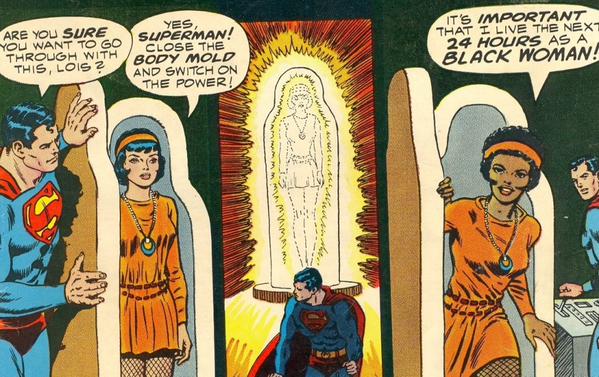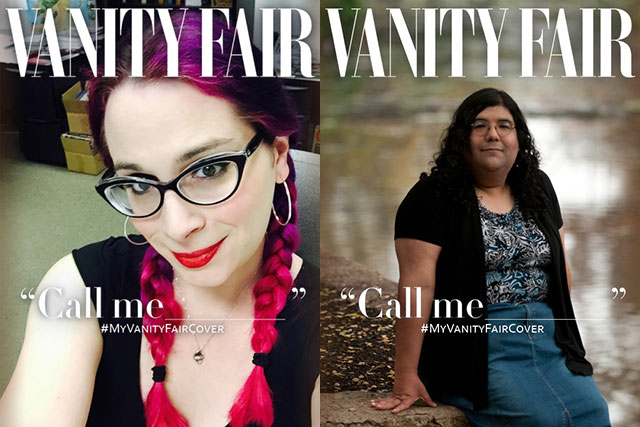
Pierre Bourdieu, in his famous critique of structuralism from Outline of a Theory of Practice, says:
only a virtuoso with a perfect command of his “art of living” can play on all the resources inherent in the ambiguities and uncertainties of behavior and situation in order to produce the actions appropriate to each case, to do that of which people will say “There was nothing else to be done”, and do it the right way.
Two recent headline-grabbing stories, Caitlyn Jenner’s Vanity Fair cover and Rachel Dolezal getting outed by her parents as “white,” have served to highlight the limits to virtuoso performance: the boundaries our society places over the individual’s ability to perform gender and ethnicity.
With regard to Caitlyn, the point was made eloquently by Laverne Cox who wrote:
Now, there are many trans folks because of genetics and/or lack of material access who will never be able to embody these standards. More importantly many trans folks don’t want to embody them and we shouldn’t have to to be seen as ourselves and respected as ourselves. It is important to note that these standards are also informed by race, class, and ability among other intersections. I have always been aware that I can never represent all trans people. No one or two or three trans people can. This is why we need diverse media representations of trans folks to multiply trans narratives in the media and depict our beautiful diversities.

Gina Mei writes about how this insightful post resulted in the twitter hashtag #MyVanityFairCover where gender-nonconforming individuals posted their own Vanity Fair covers in order to show that trans notions of beauty needn’t reproduce cisnormative beauty norms. Contrasted with these images it is even more clear how much the mainstream media’s embrace of Caitlyn serves to reaffirm traditional beauty norms rather than challenge them.
Rachel Dolezal’s story is more complicated, with new details emerging each day, making it hard to know what is true and what is rumor. However, it does seem that she lived much of her life as a white woman, even suing Howard University for discriminating against her for being white. It isn’t clear exactly when or why she decided to change her ethnicity, but there is a long history of white-to-black passing in American culture. Nor is it a phenomenon unique to any one ethnicity:
This #RachelDolezal mess ain't nothing new to us Native Americans. There are tons of fake Indians out there. Some of them are famous.
— Sherman Alexie (@Sherman_Alexie) June 14, 2015
When viewed together what these two stories make clear is that performing another ethnicity is not the same thing as performing another gender. As Adam Serwer explains:
Dolezal knew it wasn’t enough to perm and dye her hair and do whatever it is she did to her skin, and to tell everyone she was black. She also had to invent a history in which she and her family had borne the scars of racism, one in which she was born in a “tepee in Montana” and went hunting for food with bows and arrows. One in which she and her siblings endured beatings according to skin tone, and were lashed with “baboon whips” that were “pretty similar to what was used as whips during slavery,” to say nothing of the years she spent filing questionable reports with police about hate crimes. With that connection, even someone as light as her could be black.
But even that wasn’t enough. As Richard Seymour puts it: “the axis on which this question is decided appears to be, not a particular agent’s political identifications, but the socially accepted protocols of race.”
Which is not to say that gender performance involves nothing more than a perm, a dye job, and telling everyone you are a woman. Far from it. I’ve seen some arguing on the internet that the biology or race and sex differences places different kinds of limits on gender and ethnic passing. The argument being that while humans don’t have races, we do exhibit sexual dimorphism. But this is not very convincing. For one thing, the biology of human sexuality has a bigger grey zone between male and female than most people realize. Watch Alice Dreger’s TED Talk to get a sense of just how big and complex this grey zone can be. But, more importantly, within both gender and ethnic categories there are a wide range of phenotypical possibilities. The famous “paper bag test” distinguished between darker and lighter skinned blacks just as there are “tomboys” who still live as cisnormal “women.”
I think a better way of thinking about the limits of such performances comes from thinking about race and gender as technologies of power. As such, I believe we can learn a lot by looking at differences in how gender choices and racial identities are (and have been) policed, at the specific constraints such policing places on our ability to perform various identities. For one thing, women trying to pass as men are not treated the same as men passing as women. Nor are blacks passing as white treated the same way as whites passing as black. “Privilege” is an overused term, but one useful way of thinking about it lies in looking at how such failures are policed. Moreover, I think it is crucially important to remember that these constraints also operate on those who are performing the “correct” gender and ethnicity according to mainstream social norms. Blacks are sometimes accused of “acting white” and women who aren’t seen as sufficiently feminine get called a lot of nasty things. Some reports claim that Dolezal herself engaged in this kind of policing of blackness, probably to distract attention from her own failure to meet the standard.
I think that most people understand that ethnicity and gender are performances. Whether it applauds or condemns their transgression, much of the media coverage about people like Caitlyn Jenner and Rachel Dolezal serves to reproduce the mechanisms by which gender and ethnicity are policed. It is even arguable that the underlying logic of race and sexuality are reproduced as well. Is there not an silent “. . . for a man” appended to much of the appreciation of Caitlyn’s beauty? Is there not a not-so-silent “How did she think she could get away with it?” appended to much of the coverage about Rachel Dolezal? As a society we understand that gender and ethnicity are performances, but in doing so we have not yet let go of the biological determinism which underlies how we evaluate such performances.
For me, the true virtuosos are the artists and comedians who are able to perform the ambiguity, poke fun at the failures, and expose the technologies of power for what they are. I’m thinking of the “race draft” skit from the Chappelle Show, or Kate Bornstein’s peformance art. Performances that, like people uploading #MyVanityFairCover photos to Twitter, challenge us to see the workings of gender and ethnicity in reproducing the status quo.
Enjoyed the piece, and the cover image is amazing. I do have one question though: do you really think that “most people understand that ethnicity and gender are performances”? I think your assessment may be too optimistic. I’d be willing to speculate that many (if not most) people understand that ethnicity and gender have performative aspects or elements, but see those performative aspects as rooted in some kind of underlying biological “reality.”
Thanks! Regarding your second comment, this is from the end of that paragraph: “As a society we understand that gender and ethnicity are performances, but in doing so we have not yet let go of the biological determinism which underlies how we evaluate such performances.”
My question is whether identity performance on a stage, is allowed (by social norms) to imagine that difference is performative (or a possible future utopia)? Versus identity performance in ‘reality’ is allowed to ‘be’ (rather than act in theatrical sense) in light of the historical nature of any given moment ‘in reality’? I ask because I think at least a little of Dolezals self-justification on the Today programme seemed to be an academic confusion. She imagines a utopia in which the complexities of difference dont result in negative discrimination that can summed up as the idea of ‘performing identity’. But the reality of difference is historically situated and alive in the present and thus identity is not something to be performed by an actor or super-flexible in an ahistorical utopia. Instead a better idea is personhood which is integrally historical, non-dual and doesnt suffer from the half baked postmodernist idea that everything is hyper-flexible and subjective (which is the bogus outcome of accepting objective/subjective divude in deconstructing only the former) I.e. identity performance.
Thanks for the post, your raising of bourdieu in relation to this and the lack of academic commentary on what is obviously an academically half-baked and unethical defense by dolezal inspired me share a thought stream 🙂 So thanks for tackling the topic. Someone once said an idea half understood can be more dangerous than no idea (especially in an egoists hands)
There’s this classic undergrad anthro reading called “Mixed Blood” in the Spradley and McCurdy reader wherein the author compares and contrasts the racial definitions of race in Brazil and the U.S. Its a great piece to trot out before students because it clearly illustrates how people in different cultures have different constructions of race such that a person who may be used to being perceived as belong to one race in the US is in fact perceived as belonging to a different race in Brazil.
Anyways, one of the conclusions the author, I think its Jeffery Fish, comes to is that in the US racial definitions are always bound up with inheritance whereas in Brazil it is based entirely on appearance. In this way I think many people in the US are more apt to accept the performativity of gender over race. Caitlin Jenner still has a Y-chromosome, but for all intents and purposes she is a woman; however, Rachel Dolezal’s parents are white and even though she passes as black she’s still really white. So I think when it comes to interpreting the public debate around the two cases (which resonate with each other in really interesting ways, as you’ve shown here), we must take into consideration the peculiar folk taxonomies of race in the US as a major contributing factor.
“It’s not the color of the skin, but the color of your kin” in the United States.
Very informative comparison between US and Brazil Matt 🙂 I think this is an interesting piece to go with what your saying then as well http://africasacountry.com/neymar-and-race-in-brazil/